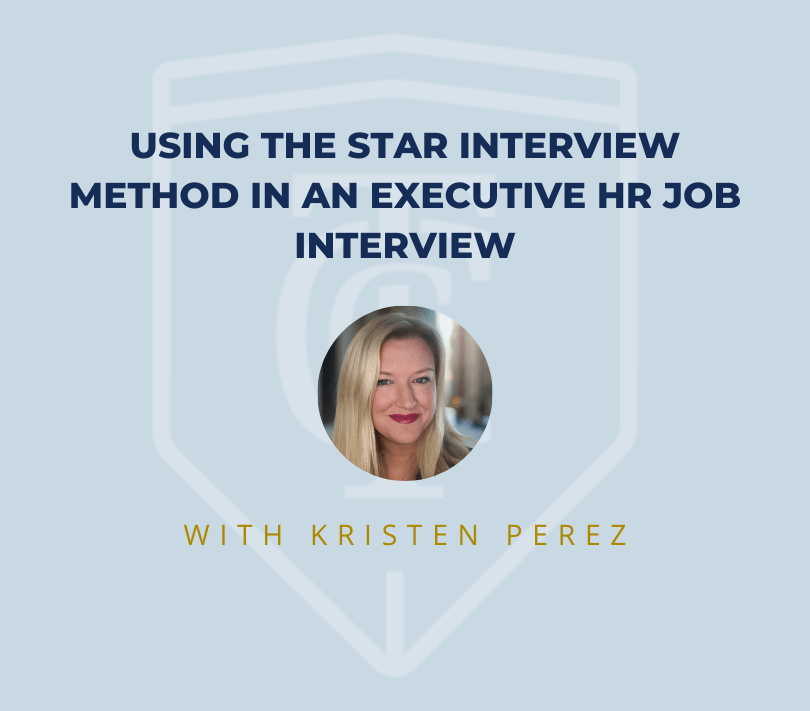
One of the most common pitfalls in interviews—especially for executive-level roles—is a lack of structure in responses. Candidates often struggle to convey their achievements in a clear, concise, and compelling way, leaving interviewers unsure of their true impact. This issue can be particularly detrimental for HR executives, where communication and strategic thinking are key. The STAR interview method offers a solution by providing a structured framework to deliver thoughtful, results-driven answers. Here’s how you can use the STAR method to stand out in an executive HR job interview.
What is the STAR Method?
Situation: Describe a specific scenario or challenge.
Task: Explain your responsibilities or goals in that scenario.
Action: Detail the steps you took to address the situation.
Result: Share the outcome, emphasizing measurable successes and lessons learned.
By breaking down your response into these four components, you ensure your answers are logical, complete, and easy for the interviewer to follow.
Why Use STAR in HR Interviews?
As an HR executive, your role often involves managing complex organizational challenges, influencing culture, and driving strategic initiatives. Behavioral interview questions often aim to assess these capabilities. STAR provides a framework to:
- Clearly articulate your experiences.
- Showcase your ability to navigate complex situations.
- Demonstrate measurable outcomes tied to your leadership.
Steps to Ace an Executive HR Interview Using STAR
1. Prepare Stories in Advance: Review the job description and identify key competencies (e.g., leadership, conflict resolution, change management). Then, brainstorm examples from your career where you’ve excelled in these areas.
Example Prompt: “Describe a time you resolved a significant workplace conflict.”
STAR Answer Framework:
Situation: “At my previous organization, there was ongoing tension between two departmental leaders due to differing priorities, which began to impact overall team morale and productivity.”
Task: “As the VP of HR, I was tasked with mediating this conflict and fostering a collaborative environment.”
Action: “I conducted one-on-one meetings with each leader to understand their concerns, facilitated a joint session to align on shared goals, and introduced a conflict resolution framework supported by external coaching.”
Result: “Within three months, the departments reported a 25% increase in collaboration metrics, and morale surveys showed a 15% improvement.”
2. Tailor Your Stories to the Role
Focus on examples that highlight strategic HR leadership. For example:
- Leading company-wide culture transformations.
- Overseeing complex talent acquisition or succession planning strategies.
- Driving initiatives that align HR with broader business goals.
3. Quantify Your Results
Executives are expected to drive measurable results. Use numbers to back your success stories.
Weak: “I improved employee retention.”
Strong: “I implemented a comprehensive retention strategy that reduced turnover by 20% within a year, saving the company $1.5 million annually.”
4. Highlight Soft and Hard Skills
Balance showcasing technical HR expertise with demonstrating leadership qualities. For instance:
Situation: “When a global pandemic disrupted our workforce operations…”
Task: “I needed to ensure seamless remote work transition while maintaining employee engagement.”
Action: “I developed a digital HR infrastructure and introduced virtual team-building initiatives.”
Result: “We achieved a 98% employee satisfaction rate for our remote work setup.”
Tips for Success
Practice Brevity: Keep your STAR answers concise yet impactful. Aim for 2-3 minutes per answer.
Stay Positive: Frame challenges as opportunities to demonstrate your problem-solving abilities.
Align with Company Goals: Show how your experiences align with the company’s mission and strategic objectives.
Engage the Interviewer: End your STAR response with a question like, “Does this align with the type of leadership you’re looking for in this role?”
Common Executive HR STAR Questions
- Can you share a time you implemented a major organizational change?
- Describe a situation where you had to address a cultural misalignment within the company.
- How have you managed conflicting priorities between different stakeholders?
- Tell me about a time you improved diversity, equity, and inclusion in an organization.
The STAR method is a powerful tool for structuring your responses in an executive HR interview. By preparing compelling, results-driven stories that highlight your strategic and leadership capabilities, you can position yourself as the ideal candidate for the role. Remember, your goal is to demonstrate not just your technical expertise but also your ability to lead and inspire at the highest organizational levels.

Kristen brings over 18 years of executive recruiting experience, having worked in Human Resources roles focusing on Talent Acquisition and Organizational Development. She joined The Christopher Group as a Recruiting Manager in 2021 and was promoted to Recruiting Director in 2022. Kristen specializes in filling Human Resources executive roles nationwide and has a robust background in the Manufacturing, Logistics, Oil & Gas, Aviation, Consulting, Private Equity, and Healthcare industries. Within the firm, she unofficially serves as the organization and technology guru. To learn more about Kristen, visit her bio page.

